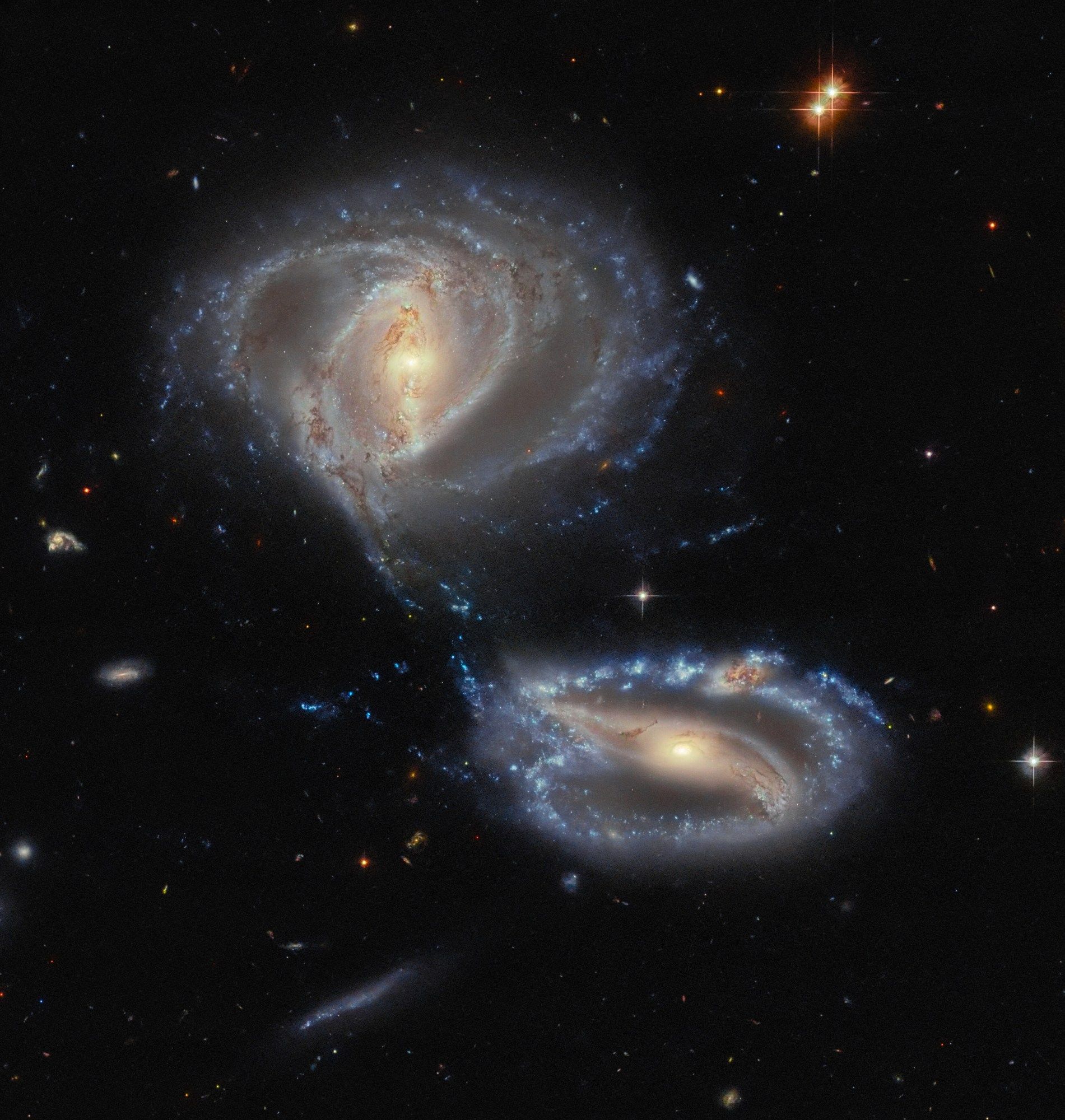2023-10-26 NASA
◆SN 1006は、6,500光年離れたLupus座に位置し、現代の天文学者にとって最も明るい恒星の爆発事象であるとされています。これまでのX線観測から、SN 1006の独特の構造は磁場の方向と関連しており、爆風が磁場と一致する方向に移動し、高エネルギー粒子を効率的に加速すると理論化されていました。IXPEの新たな発見は、これらの理論を検証し、明確にしました。
<関連情報>
- https://www.nasa.gov/missions/ixpe/ixpe-untangles-theories-surrounding-historic-supernova-remnant/
- https://iopscience.iop.org/article/10.3847/1538-4357/acf3e6
画像X線ポラリメトリーによるSN1006の磁気構造と乱流の解明 Magnetic Structures and Turbulence in SN 1006 Revealed with Imaging X-Ray Polarimetry
Ping Zhou, Dmitry Prokhorov, Riccardo Ferrazzoli, Yi-Jung Yang, Patrick Slane, Jacco Vink, Stefano Silvestri, Niccolò Bucciantini, Estela Reynoso, David Moffett, Paolo Soffitta, Doug Swartz, Philip Kaaret, Luca Baldini, Enrico Costa, C.-Y. Ng, Dawoon E. Kim, Victor Doroshenko, Steven R. Ehlert, Jeremy Heyl, Frédéric Marin, Tsunefumi Mizuno, Melissa Pesce-Rollins, Carmelo Sgrò, Toru Tamagawa, Martin C. Weisskopf, Fei Xie, Iván Agudo, Lucio A. Antonelli, Matteo Bachett, Wayne H. Baumgartner, Ronaldo Bellazzini, Stefano Bianchi, Stephen D. Bongiorno, Raffaella Bonino, Alessandro Brez, Fiamma Capitanio, Simone Castellano, Elisabetta Cavazzuti, Chien-Ting Chen, Stefano Ciprini, Alessandra De Rosa, Ettore Del Monte, Laura Di Gesu, Niccolò Di Lalla, Alessandro Di Marco, Immacolata Donnarumma, Michal Dovčiak, Teruaki Enoto, Yuri Evangelista, Sergio Fabiani, Javier A. Garcia, Shuichi Gunji, Kiyoshi Hayashida, Wataru Iwakiri, Svetlana G. Jorstad, Fabian Kislat, Vladimir Karas, Takao Kitaguchi, Jeffery J. Kolodziejczak, Henric Krawczynski, Fabio La Monaca, Luca Latronico, Ioannis Liodakis, Simone Maldera, Alberto Manfreda, Andrea Marinucci, Alan P. Marscher, Herman L. Marshall, Giorgio Matt, Ikuyuki Mitsuishi, Fabio Muleri, Michela Negro, Stephen L. O’Dell, Nicola Omodei, Chiara Oppedisano, Alessandro Papitto, George G. Pavlov, Abel L. Peirson, Matteo Perri, Pierre-Olivier Petrucci, Maura Pilia, Andrea Possenti, Juri Poutanen, Simonetta Puccetti, Brian D. Ramsey, John Rankin, Ajay Ratheesh, Oliver Roberts, Roger W. Romani, Gloria Spandre, Fabrizio Tavecchio, Roberto Taverna, Yuzuru Tawara, Allyn F. Tennant, Nicholas E. Thomas, Francesco Tombesi, Alessio Trois, Sergey S. Tsygankov, Roberto Turolla, Kinwah Wu, and Silvia Zane
The Astrophysical Journal Published 2023 October 27
DOI:10.3847/1538-4357/acf3e6

Abstract
Young supernova remnants strongly modify the surrounding magnetic fields, which in turn play an essential role in accelerating cosmic rays (CRs). The X-ray polarization measurements probe magnetic field morphology and turbulence at the immediate acceleration site. We report the X-ray polarization distribution in the northeastern shell of SN 1006 from a 1 Ms observation with the Imaging X-ray Polarimetry Explorer. We found an average polarization degree of 22.4% ± 3.5% and an average polarization angle of −45 4 ± 4
4 ± 4 5 (measured on the plane of the sky from north to east). The X-ray polarization angle distribution reveals that the magnetic fields immediately behind the shock in the northeastern shell of SN 1006 are nearly parallel to the shock normal or radially distributed, similar to that in the radio observations, and consistent with the quasi-parallel CR acceleration scenario. The X-ray emission is marginally more polarized than that in the radio band. The X-ray polarization degree of SN 1006 is much larger than that in Cas A and Tycho, together with the relatively tenuous and smooth ambient medium of the remnant, favoring that CR-induced instabilities set the magnetic turbulence in SN 1006, and CR acceleration is environment-dependent.
5 (measured on the plane of the sky from north to east). The X-ray polarization angle distribution reveals that the magnetic fields immediately behind the shock in the northeastern shell of SN 1006 are nearly parallel to the shock normal or radially distributed, similar to that in the radio observations, and consistent with the quasi-parallel CR acceleration scenario. The X-ray emission is marginally more polarized than that in the radio band. The X-ray polarization degree of SN 1006 is much larger than that in Cas A and Tycho, together with the relatively tenuous and smooth ambient medium of the remnant, favoring that CR-induced instabilities set the magnetic turbulence in SN 1006, and CR acceleration is environment-dependent.



